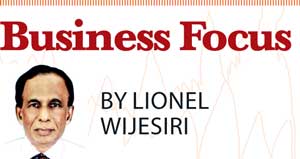30 May 2016 - {{hitsCtrl.values.hits}}

 Customer satisfaction studies are often the focus of primary research efforts. These studies frequently address customer service and support issues and as such may provide answers to few questions. (1) For which customer segments has satisfaction increased or decreased? (2) Have improvements in call-centre practices increased satisfaction? (3) How do highly satisfied customers differ from highly dissatisfied customers?
Customer satisfaction studies are often the focus of primary research efforts. These studies frequently address customer service and support issues and as such may provide answers to few questions. (1) For which customer segments has satisfaction increased or decreased? (2) Have improvements in call-centre practices increased satisfaction? (3) How do highly satisfied customers differ from highly dissatisfied customers?
Unfortunately, customer satisfaction statistics arc often limited in their application because they are seldom correlated with customer behaviours. Interestingly, these correlations may not be what you expect. For example, some studies have found that those customers who expressed some level of dissatisfaction were actually less likely to leave. The finding in this case was that those who were willing to invest time in a satisfaction study were actually those who had loyalty to the brand. It is obviously important to understand how satisfaction data may or may not be related to your customers’ behaviour.
Customer loyalty and value
Understanding customer spending behaviour and satisfaction and the potential relationship between these factors, is obviously important. The critical results of customer behaviour and satisfaction are customer loyalty and value. A solid understanding of loyalty and value and the factors that influence them provide a basis for all of your customer relationship management (CRM) strategies and programmes.
Questions answered at this stage increase significantly in number and include:
(1) Who are your unique customer segments? (2) Does your organisation have profitable relationships with all of your customers? (3) How can you increase customer profitability? (3) What drives loyalty for your most profitable customers? (4) How do you increase customer loyalty? (5) How can you increase the cross-purchase activity of our customers? (6) Which prospects should your organisation focus on in order to clone your best customers?
These people-based metrics will encourage your organisation to focus on customers, as well as provide relevant measures of CRM success over time.
Comprehensive customer intelligence is not developed overnight. Rather, it is an iterative process that includes collecting relevant customer data, building on your customer intelligence incrementally and communicating results across the organisation with a customer scorecard.
Collecting right customer data
A first step and ongoing process should focus on the collection, cleaning and consolidation of data on your customers. There are a number of key attributes that you should attempt to gather and maintain on each of your customers.Answer the following questions with your organisation’s data:
Who are your customers?
Unique customer identifier: Customer name, name of organisation for which the customer works, name of department or group within organisation in which the customer works, title, role in organisation or other designation.
Where can you reach your customers?
Home address, business address, phone number, e-mail address, fax number.
What are your customers’ key characteristics?
Consumer, gender, age, household size, estimated income, presence of children, segment classifications.
How do your customers prefer to interact with you?
Media preference (e.g., mail, e-mail, phone, fax), channel preference (e.g., web, retail store or branch, salesperson, phone), opt-in or opt-out for any media or specific communications.
What has been your history of interactions?
Outbound marketing promotion history, outbound sales contact history, inbound customer-initiated queries.
What has been your customers’ purchase behaviour?
Purchase dates, number of transactions, items, prices, channels utilized, returns, exchanges.
What is the customer’s value to your organization?
Revenue to date, profitability to date, estimated lifetime value, estimated share of wallet, estimated probability of response to specific promotions, estimated probability of specific purchases, estimated probability of non-payment or bad debt.
Increasing your customer IQ
Customer insights drive sales. To win, you need to give customers what they want, make it easy for them to buy and ensure that they know you exist and can meet their needs. Each of these requires deep customer knowledge, because everyone buys differently. The person who buys a Benz shops differently from the person who drives a Honda Civic.
1. Examine your past successes
Which customers were easiest to attract? The most profitable? Bought the quickest? Became steady customers? Those are the successes that you want to replicate.
Look for clues that will help you and others identify these prospects. Do they have any common characteristics such as location, size, industry or products purchased? Was there a particular event that caused them to purchase when they did? Did they hear about you from a particular source?
The more specifically that you can describe your ideal prospects, the easier it will be to find and reach these individuals. Concentrating your firepower on those accounts will dramatically improve your sales effectiveness.
2. Ask, don’t guess
People buy for a variety of reasons. Yet, to capture their attention, you need to communicate a simple, clear, consistent message. Only after you grasp people’s attention can you provide them with all the other information that they require to make their buying decision.
The best way to identify that initial message is to focus on your most promising prospects. Ask them to describe what they were looking for, how they made their decision, why they bought from you.
Then ask: “What was the single most important reason that you selected our company?” Surprisingly, it is not uncommon for customers to produce an answer that they never mentioned when providing a laundry list of what they were looking for and how they purchased.
Sometimes this is because multiple people were involved in the decision but one person’s preferences carried more weight. Other times, it is because while the whole list of things was important, only one dimension differentiated your firm from the competition. The important thing is that you won’t know if you don’t ask.
3. Understand the key decision points
Especially for large purchases, getting the sale depends on a number of factors.
Before a firm can buy from you, nine things need to happen. Customers must, (1) have a need for your products or services, (2) recognize that that they have that need, (3) be ready to buy, (4) know that your company exists, (5) believe that your company can address their concerns, (6) remember your firm when it comes time to buy, (7) decide that your offering has the features that they require, (8) believe your solution is priced appropriately and (9) find it easy to do business with you
If prospects fail to meet even one of these criteria, chances are the business will go to someone else. Each stage in the sales cycle represents an opportunity to capture prospects’ attention and woo them from the competition.
For example, if you are spending time wooing prospects that don’t need or recognize your services, you’re wasting time that could be spent with those who do. Similarly, potential prospects won’t buy from you unless they know what you exist, can solve their problem and think of you when it comes time to purchase. Even those who want to buy will lose interest if they encounter obstacles, if your product or service lacks the necessary features or if the price exceeds the value. The good news is that if you can identify the points at which you are losing traction, it is relatively easy to take action. Therefore, your company should have a system for capturing the information that they require to measure progress at each stage. Knowledge is power when it comes to winning new business. Seize the competitive advantage by learning what customers want and how they prefer to buy. Then, give it to them... well, their way.
(Lionel Wijesiri, a corporate director with over 25 years’ senior managerial experience, can be contacted at [email protected])
10 Jan 2025 2 hours ago
10 Jan 2025 3 hours ago
10 Jan 2025 4 hours ago
10 Jan 2025 5 hours ago
10 Jan 2025 5 hours ago